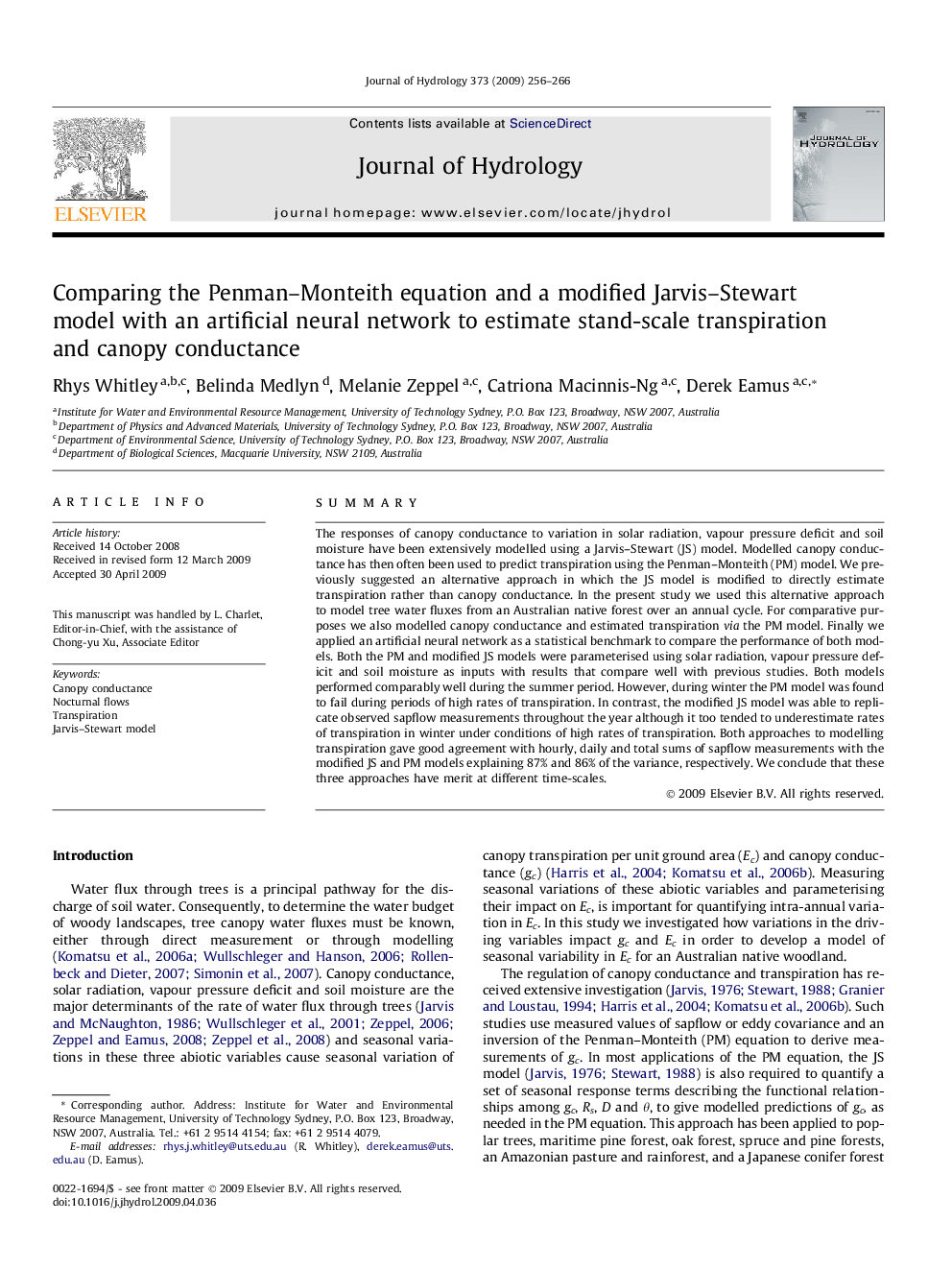| کد مقاله | کد نشریه | سال انتشار | مقاله انگلیسی | نسخه تمام متن |
|---|---|---|---|---|
| 4578873 | 1630079 | 2009 | 11 صفحه PDF | دانلود رایگان |

SUMMARYThe responses of canopy conductance to variation in solar radiation, vapour pressure deficit and soil moisture have been extensively modelled using a Jarvis–Stewart (JS) model. Modelled canopy conductance has then often been used to predict transpiration using the Penman–Monteith (PM) model. We previously suggested an alternative approach in which the JS model is modified to directly estimate transpiration rather than canopy conductance. In the present study we used this alternative approach to model tree water fluxes from an Australian native forest over an annual cycle. For comparative purposes we also modelled canopy conductance and estimated transpiration via the PM model. Finally we applied an artificial neural network as a statistical benchmark to compare the performance of both models. Both the PM and modified JS models were parameterised using solar radiation, vapour pressure deficit and soil moisture as inputs with results that compare well with previous studies. Both models performed comparably well during the summer period. However, during winter the PM model was found to fail during periods of high rates of transpiration. In contrast, the modified JS model was able to replicate observed sapflow measurements throughout the year although it too tended to underestimate rates of transpiration in winter under conditions of high rates of transpiration. Both approaches to modelling transpiration gave good agreement with hourly, daily and total sums of sapflow measurements with the modified JS and PM models explaining 87% and 86% of the variance, respectively. We conclude that these three approaches have merit at different time-scales.
Journal: Journal of Hydrology - Volume 373, Issues 1–2, 30 June 2009, Pages 256–266